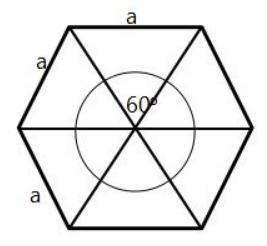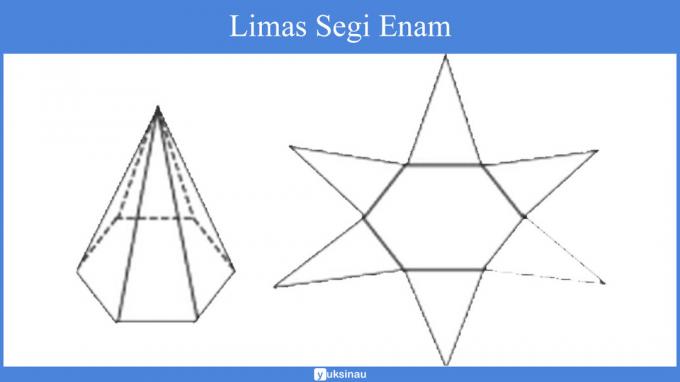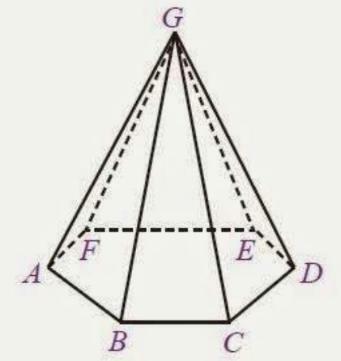Hexagon Pyramids: Definition, Properties, Formulas, Example Problems
X
Advertisements
Loading...
Surely many of us do not realize that there are lots of objects around that have the shape of a hexagon pyramid. For example, the pyramids, roofs, towers, and others.
In mathematics itself, it turns out that pyramids have several types based on the shape of the base.
But at this time, we will only discuss in more detail related to hexagon pyramids, read more carefully in the reviews below, yes.
list of contents
Definition

Advertisement
Hexagon is a flat shape that has 6 sides and 6 angles.
Flat shapes for hexagons are divided into two types, namely regular hexagons and irregular hexagons.
A regular hexagon is a hexagon in which all six sides are the same length and have six equal angles.
Meanwhile, an irregular hexagon is a hexagon with at least 2 sides that are not the same length as the other sides. Which makes the angle is also not as large.
Another difference that exists in regular hexagons is easier in arithmetic problems than irregular hexagons.
Therefore, we will discuss related to regular hexagons.
Regular Hexagon
As explained above about a regular hexagon if a regular hexagon has 6 equal sides and 6 equal angles.
The following is a description in the form of images, among others:
Advertisement

In the picture above, we can see that a regular hexagon is made up of 6 equilateral triangles.
This can be proven if you divide the central angle which is 360o into 6 equal angles, you will get a number of 60o.
Next, you can make sure that the sides that make up the 60o angle are the same length. So that between the two other angles formed by 60o as well.
This is what makes the triangle an equilateral triangle which has the same side length, which is a unit length.
The Nature of the Hexagon Pyramid

Hexagon pyramid is a type of pyramid that has a hexagon-shaped base and has a side blanket with a triangular shape.
The following are some of the properties of a hexagon pyramid that you need to know, including:
- It has 7 sides, namely a base side with a hexagon shape and 6 blanket sides with a triangular shape.
- Has a total of 12 ribs, namely 6 ribs on the base and a total of 6 ribs on the side of the blanket.
- A hexagon pyramid has a total of 7 vertices.
Pyramid Formula
Here are some formula on pyramids What you need to know includes:
- How to count the number of sides: n + 1
- How to count the number of edges on a pyramid: n x 2
- How to calculate the number of vertices on a pyramid: n + 1
Problems example

To make it easier for you to understand the description above regarding hexagon pyramids, the following are examples of questions and discussions that you can learn, including:
1. First Example
A regular hexagon pyramid has a base area of 120 cm2 and a vertical triangle area of 30 cm2.
Then calculate the surface area of the hexagon pyramid!
Advertisement
Answer:
Known:
- Area of base = 120 cm2
- Area of a right triangle = 30 cm2
Asked:
What is the surface area of the pyramid.
Discussion:
Surface area = area of base + total area of vertical sides
Area of base = 120 cm2
The total area of the upright sides = 6 x area of the right triangle = 6 x 30 cm2 = 180 cm2
So we can know that the surface area of the hexagon pyramid is 120 + 180 = 300 cm2.
Advertisement
2. Second Example
How many edges are there in a hexagon pyramid?
Answer:
The number of vertices in a prism can be found using the following formula:
Number of edges = 2n
Since the base has a hexagon shape, the value of n is 6.
Therefore, for the number of ribs to be:
rib = 2n
= 2 x 6
= 12
So we can know that the number of edges in a hexagon pyramid is 12.
